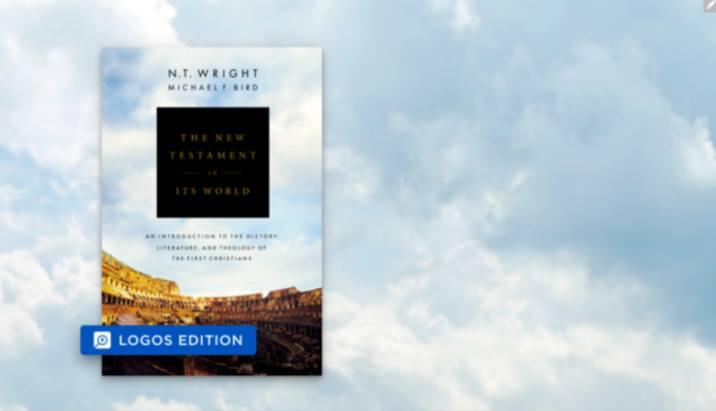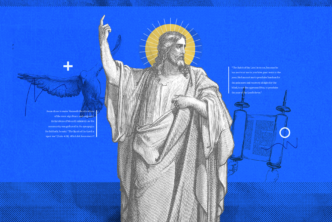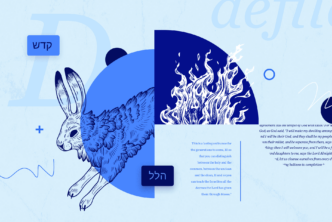The information age is changing how we deliver teaching and learning in seminary education. Accordingly, our pedagogy needs to catch up with the technology and the needs of our students. My mind changed on this very slowly and very reluctantly, but several observations over the last decade have convinced me that we need to adapt to a fluid learning environment.
Like many of you, when I went to seminary you went for three years, you lived on campus, you did a full-time study load and worked part-time, and probably did a placement in a local church. You did all your lectures on campus, had regular chapel, mentoring groups, and met with faculty face-to-face.
But the times are a-changing.
The New School
The majority of students are now part-time, they mostly do blended learning, attending some classes on-campus and some on-line, with increasing numbers doing on-line only. In my own institution, Ridley College, ten years ago only 10% of our students were on-line, now its 60%; and these aren’t just distance students, many of them are local. They don’t want to quit their job or leave their church; they want flexibility and quality in education! I’ve found the same thing to be generally true in American seminaries and colleges.
Also, consider this: kids under the age of 30 do not remember a world without the internet and in some cases they have watched television on everything except a television. Students are not just getting their theological formation through pastors and books, but through blogs, YouTube, social media, apps, and podcasts. Many will be reading their Bible on an app or Kindle rather than in hardcover. It’s the information age all the way down.
If you are in theological education, you can respond in one of two ways.
First, you can beat your chest, and say, “We shall have students on-campus, face-to-face, there will be no laptops in the classroom, no tweeting, no instagramming, students will have books, and they will learn to love the smell of my chalk.”
But if we do that, sooner or later we’ll be having a chat with an insolvency accountant because of a basic economic principle: supply does not create demand. What students demand is flexibility, efficiency, experience, and value for money. If you don’t offer it, someone else will.
Second, alternatively, you can ask: How do I teach Theology and Bible in the information age in a way that meets with students’ needs, whether on-campus or on-line, that strives for pedagogical excellence, that meets the learning outcomes, but without watering down the content or compromising educational values?
I’m not an expert on educational theory or educational business models. But as a professor and author here is what I can tell you about teaching New Testament in the information age using the textbook and video The New Testament in its World (NTiiW) with Logos as a test case.
Teaching Options
Consider this scenario. During a New Testament Intro course you’re giving a lecture on Paul’s biography and missionary journeys. Here are two suggested approaches depending on the venue:
On Campus
First, on-campus. There’s an alternative to Handouts-plus-PowerPoint (Lord have mercy!).
- Kick off with a general quiz about Paul’s biography using the app Gnowledge to find out how much the students know or don’t know about Paul’s career. Segue into a brief discussion of Paul’s biography, the major events of his life, and what sources we use to map Paul’s career.
- Open up Logos and project it onto the white board with the English text of the NT and NTiiW set in parallel columns.
- Click on NTiiW chapter 15 and bring up the dot-points on Paul’s chronology that you’ve bookmarked, then alt-tab to bring up key texts like 2 Cor 11:32, Gal 2:1-10, and Acts 18:12 to show how they are the anchor points for a basic chronology of Paul.
- Bring up the inset box in NTiiW about Paul of Acts vs. Paul of the Epistles.
- Then alt-tab to bring up maps in Logos and give a basic survey of Paul’s travels.
- When you get to Paul in Ephesus, alt-tab back to NTiiW to the dot-points about Paul’s correspondence with the Corinthians and the many trips made by his co-workers.
- Then alt-tab to bring up either a Logos video of N.T. Wright talking about Acts or the NTiiW Video 15 of N.T. Wright talking about Paul’s travels.
- Then use the Logos Work Flow to go through some key texts from Galatians and Acts about Paul’s career.
- Ask students to tweet their # 1 takeaway from the class today.
Online
Second, online. There’s an alternative to: “Here’s the PDF, a textbook, an email address if you get lost, and see you at the exam in December.”
Your student logs on to a web-based platform – Moodle or Blackboard, etc. – and then:
- Student completes a quiz about last week.
- Student reads chapter 15 from NTiiW, which is embedded in Moodle/Blackboard, completely searchable and hyperlinked (this can be done if you have the licenses!).
- Student watches Video 15 from the NTiiW video series about Paul’s ministry, maybe supplemented with your own recording from your iPad which you’ve uploaded.
- Student reads a dictionary article from Logos on “Dura-Europos,” watches a YouTube video about Dura-Europos, then reads the inset box from NTiiW about “What if Paul Had Gone East Into Bithynia?”
- Student then writes an alternative history of 250 words of Paul preaching in the synagogue at Dura-Europos as if he or she were Luke.
- In a discussion forum, students must write 250 words on whether Galatians 2:1-10 = Acts 11:27-30 or Acts 15:1-33, and then interacts with at least two other students.
- Student listens to Acts 28 in audio, and writes personal reflections on how Paul’s career ends according to Luke.
- Assign time for a group Skype meeting for those who want to chat with the designated instructor.
There are various ways to integrate teaching, technology, and texts. What I’ve described here is but one way of doing on-campus and on-line teaching of New Testament Intro using Logos and a quality textbook and video resource that is tech-savvy, informative, and creates a unique learning experience.





